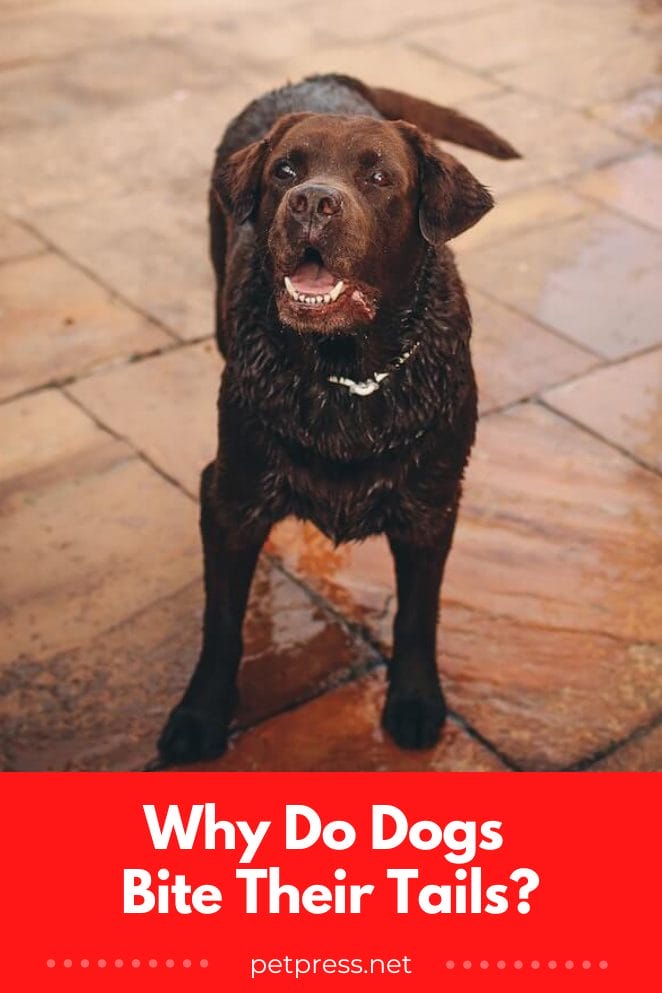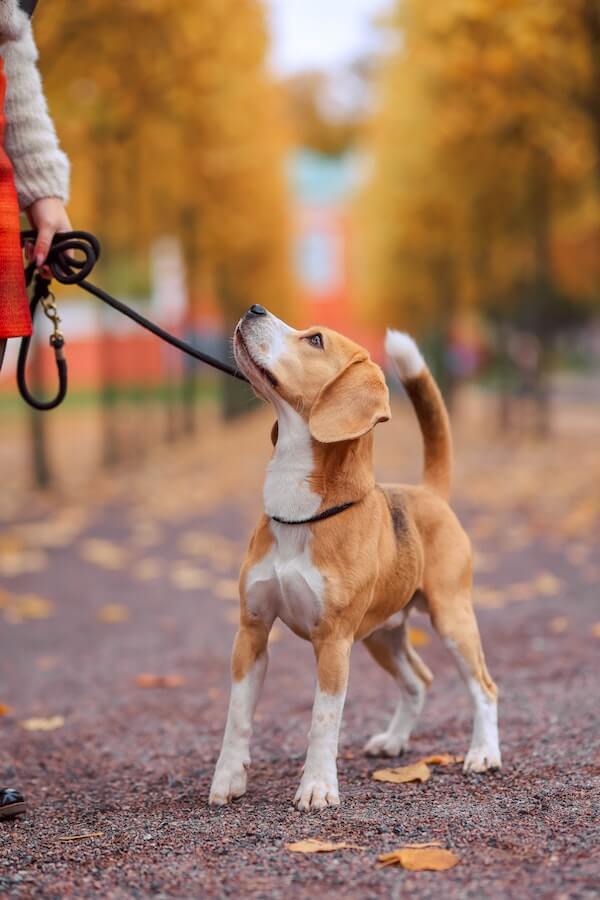
Do you ever wonder why dogs bite their tails? It’s a question that has puzzled pet owners, but the truth is that tail-biting is one of the most common canine behaviors.
While it may seem strange, there are actually several logical reasons why our furry friends chomp on their own tails—and in some cases, even chew off pieces of fur!
In this article, we’ll explore exactly why dogs bite their tails and how to discourage this potentially dangerous behavior.
Why do dogs bite their tails?
Dogs can be mischievous creatures, and one of their less endearing habits is chasing their tail and also biting it. But why do dogs bite their tails? Here are 7 possible explanations:
1. Stress and Anxiety
Things like a lot of anxiety, and stress can lead dogs to destructive and repetitive behaviors, including tail biting.
Crating a dog for long periods of time can cause the dog to turn its attention inward and seek relief by biting its tail.
Lack of exercise, interactive play, and mental stimulation can also contribute to these behaviors.
2. Infestations by Parasites
Dogs are often plagued by seasonal infestations of fleas and ticks, leading them to scratch incessantly at the affected areas.
Although medicated collars, regular baths, and prescriptions can effectively treat these pests, some dogs may be allergic to the saliva in the bites, causing them to chew at the site of an allergic reaction.
This might often lead them to break their own skin.

3. Hot Spots
Repeated scratching or chewing can lead to open wounds, known as hot spots, which can become infected if left untreated.
A veterinarian can help determine whether the true cause of the hot spot is related to hygiene, nutrition, or another factor.
4. Injury
Dogs may bite their tail excessively if they have an injury in their hindquarters, such as a broken or fractured tailbone.
Veterinary X-rays are necessary to diagnose these issues.
5. Allergic Reactions
Dermatitis, caused by fleas and ticks, is not the only allergy that can cause a dog to chew at its tail.
Environmental allergies, ranging from pollen and mold to household chemicals, can also give rise to allergic reactions.
These reactions are most severe in a dog’s early years, and even simple things like shampoos or soaps used to bathe the dog can spur an allergic response.
6. Impacted Anal Glands
An impacted anal gland is another common reason why a dog may bite at the base of its tail. These glands are important to dogs, as they fill a similar social need as handshakes do for humans.
Signs of impacted anal glands include scooting, foul-smelling discharge, and difficulty defecating. In severe cases, blood or pus may be present in the feces.
7. Compulsive Disorder
Finally, if none of the above explanations are applicable, your pet’s tail biting may be caused by a compulsive disorder.
Dogs with compulsive disorders often fixate on one behavior or body part and repeat it endlessly. If this is the case, then professional help from a veterinarian or animal behaviorist should be sought as soon as possible.
It can be difficult to determine why exactly your dog is biting its tail, so consulting with a vet is always recommended for diagnosing and treating any underlying conditions that may be causing the problem. But you can start with a few basics when it comes to your dog.

How do I stop my dog from biting his tail?
Besides taking your dog to the vet, here are three ways to discourage tail biting:
1. Regular Grooming:
A great way to discourage your pup from biting his tail is through regular grooming sessions.
Not only will it help keep him looking sharp, but brushing out any mats or tangles that could be causing itchiness can reduce the need for him to start chewing on himself.
2. Exercise and Mental Stimulation:
Make sure your dog is getting enough physical and mental exercise each day—that means plenty of playtime, regular walks, and even puzzle toys!
Boredom can contribute to excessive licking or chewing so make sure your pup has plenty of activities to keep him occupied throughout the day.
3. Create a Distraction:
If you catch your pup in the act of nibbling at his tail, try to distract him with a toy.
Giving him an appropriate chew toy or stuffed Kong can help redirect his nibbling from his tail to something more suitable.

Final Thoughts
Ultimately, it’s important to keep an eye out for any signs of pain or discomfort that may be causing your pup to bite at his tail.
If you notice anything unusual, make sure to consult your vet right away. With the right strategies in place and some patience, you can help ensure your furry friend is happy and healthy!


GIPHY App Key not set. Please check settings